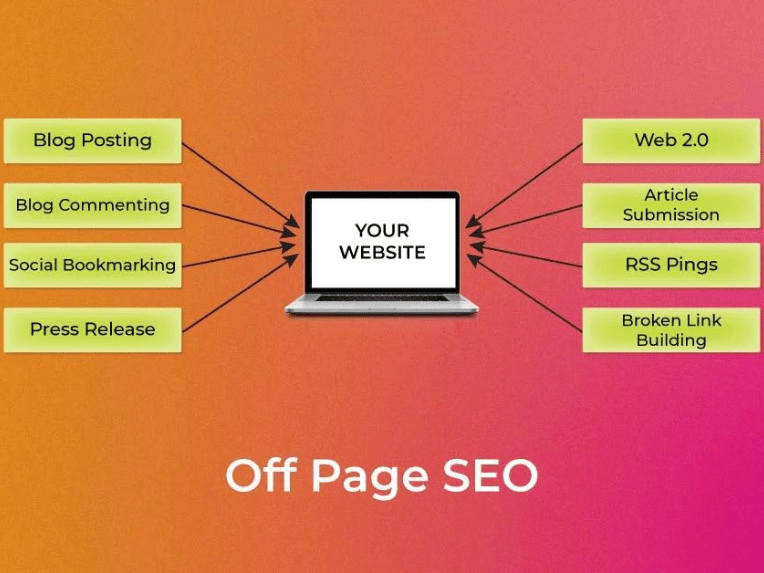When it comes to climbing the ranks of search engine results, off page SEO plays a pivotal role. Unlike on-page SEO, which focuses on optimizing content and HTML tags within your site, off page SEO involves activities that occur outside your website but still impact its performance in search engines. One of the most crucial aspects of off page SEO is backlinks. But what exactly are they, and why should you care? Let’s dive into the world of backlinks and explore their types and significance.
What Are Backlinks in Off Page SEO?
Definition and Importance
Backlinks, also known as inbound links or incoming links, are links from one website to another. Imagine your website as a book and backlinks as references from other books. Just as references add credibility to a book, backlinks enhance the authority and trustworthiness of your website. They serve as a vote of confidence from other sites, signaling to search engines that your content is valuable and worth promoting.
How Backlinks Affect Off Page SEO
Search engines like Google use backlinks as a major ranking factor. The more quality backlinks you have pointing to your site, the more authoritative and relevant search engines perceive your site to be. This can lead to higher rankings in search results and increased organic traffic. But not all backlinks are created equal, and understanding the different types can help you strategize effectively.
Types of Backlinks
Backlinks come in various forms, each with its own set of characteristics and benefits. Here’s a breakdown of the primary types:
1. Natural Backlinks
Definition and Examples
Natural backlinks are links that you earn organically because your content is valuable and interesting. For instance, a well-researched blog post might naturally attract links from other bloggers or journalists who reference it in their own articles. These are often seen as the most valuable because they come from genuine interest and not from any coercion or manipulative tactics.
How to Earn Natural Backlinks
To earn natural backlinks, focus on creating high-quality, engaging content that provides real value. This could be in the form of in-depth articles, research studies, or compelling multimedia content. Promoting your content through social media and networking with industry influencers can also increase the likelihood of earning these coveted links.
2. Manual Backlinks
Definition and Examples
Manual backlinks are acquired through deliberate efforts. This involves actively reaching out to other site owners, bloggers, or influencers to request a link. For example, you might ask a popular industry blog to include a link to your content in their next post. These are more controlled but still need to be approached carefully to avoid coming off as spammy.
How to Build Manual Backlinks
Building manual backlinks requires a well-thought-out strategy. Start by identifying authoritative sites in your niche and crafting a personalized outreach strategy. Offer them something of value, such as guest posts or valuable insights, in exchange for a backlink. Remember, the key is to provide real value and relevance.
3. Self-Created Backlinks
Definition and Examples
Self-created backlinks are links you create yourself, often through forums, comments, or user profiles. For instance, adding a link to your website in the signature of a forum post or comment is considered a self-created backlink. These links can be a quick way to get your link out there but can sometimes be viewed as less credible.
Risks of Self-Created Backlinks
While self-created backlinks can give a temporary boost, they carry risks. Search engines may view them as manipulative if overused or if they come from low-quality or irrelevant sources. It’s essential to use this method sparingly and ensure that links are placed in a contextually relevant and non-spammy manner.
High-Quality Backlinks vs. Low-Quality Backlinks
Not all backlinks are equal. The quality of a backlink can significantly impact its effectiveness.
Characteristics of High-Quality Backlinks
High-quality backlinks come from reputable, authoritative sites relevant to your industry. These links typically have high domain authority, are placed in contextual content, and are earned rather than bought. They provide substantial value and credibility to your site.
Characteristics of Low-Quality Backlinks
Low-quality backlinks often come from spammy or irrelevant sites with low domain authority. These can include links from link farms, low-quality directories, or irrelevant blog comments. Such links can harm your site’s reputation and may even result in penalties from search engines.
How to Evaluate Backlink Quality
Tools for Evaluating Backlinks
Several tools can help assess the quality of backlinks. Google Search Console, Ahrefs, Moz, and SEMrush are popular options. These tools provide insights into your backlink profile, including domain authority, anchor text, and link sources.
Key Metrics to Consider
When evaluating backlinks, focus on metrics such as domain authority, relevance to your industry, the anchor text used, and the overall trustworthiness of the linking site. High domain authority and contextual relevance are good indicators of a valuable backlink.
Strategies for Acquiring High-Quality Backlinks
Content Creation and Marketing
Creating outstanding content is one of the best strategies for earning high-quality backlinks. Develop content that is informative, unique, and engaging. Infographics, research reports, and comprehensive guides are particularly effective. Share this content widely to attract backlinks naturally.
Outreach and Networking
Building relationships with influencers, bloggers, and industry leaders can lead to valuable backlink opportunities. Engage with them on social media, attend industry events, and offer to contribute guest posts or insights. Networking can open doors to high-quality backlinks.
Common Backlink Mistakes to Avoid
Buying Backlinks
Buying backlinks for Off Page SEO might seem like a quick fix, but it’s risky. Search engines are adept at detecting paid links and may penalize your site if they find you engaging in such practices. Focus on earning backlinks through genuine methods instead.
Overusing Exact Match Anchor Text
Using exact match anchor text excessively can be a red flag to search engines. Instead, vary your anchor text and use natural, contextually relevant phrases. This helps maintain a healthy and diverse backlink profile.
Conclusion
Understanding the different types of backlinks and their impact on SEO is crucial for any successful off-page strategy. From natural to self-created backlinks, each type has its role and potential impact. By focusing on high-quality, relevant backlinks and avoiding common pitfalls, you can significantly enhance your site’s authority and search engine ranking. Remember, in the world of SEO, quality always trumps quantity.
FAQs
- What is the most valuable type of backlink? The most valuable type of backlink is a natural backlink from a reputable and relevant site. These are earned organically and signal high credibility to search engines.
- How can I start building manual backlinks? Begin by identifying authoritative sites in your niche. Reach out with a well-crafted pitch, offering valuable content or collaboration in exchange for a backlink.
- Are self-created backlinks harmful? Self-created backlinks can be harmful if overused or placed in low-quality contexts. Use them sparingly and ensure they are relevant and non-spammy.
- What tools can I use to evaluate my backlinks? Tools such as Google Search Console, Ahrefs, Moz, and SEMrush are excellent for evaluating your backlink profile and assessing link quality.
- Can buying backlinks ever be a good strategy? Buying backlinks is generally not recommended as it can lead to search engine penalties. It’s better to focus on earning backlinks through high-quality content and genuine outreach.

